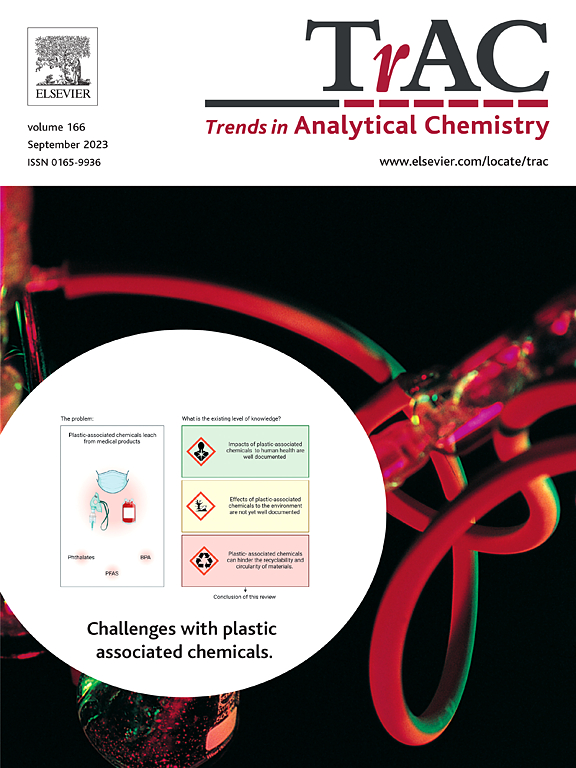利用核酸等温扩增技术诊断关节感染的生物传感器的最新发展趋势:从采样到鉴定,迈向护理点
IF 11.8
1区 化学
Q1 CHEMISTRY, ANALYTICAL
引用次数: 0
摘要
随着关节置换数量的不断增加,关节感染已成为与全关节置换术相关的一种严重且具有破坏性的并发症。细菌生物膜的形成和持续存在对宿主免疫系统和抗生素形成了一道强大的屏障,导致了关节感染的发病机制、抗生素耐药性和治疗失败。这篇综述探讨了利用等温核酸扩增技术设计的生物传感器的最新发展趋势,旨在管理关节感染,重点介绍其优缺点,尤其关注其与护理点检测的整合。在细节方面,将特别关注此类快速、特异性鉴定病原体核酸的创新方法,涵盖从取样到提取、扩增和检测方法的整个过程。本文章由计算机程序翻译,如有差异,请以英文原文为准。
Latest trends in biosensors powered by nucleic acid isothermal amplification for the diagnosis of joint infections: From sampling to identification towards the point-of-care
As the number of joint arthroplasties continues to increase, joint infections have emerged as a significant and devastating complication associated with total joint arthroplasty. The formation and persistence of bacterial biofilms create a formidable barrier against both the host immune system and antibiotics, contributing to the pathogenesis of joint infections, antibiotic resistance, and treatment failures. This review examines the latest trends on biosensors powered by isothermal nucleic acid amplification technologies designed to manage joint infections, highlighting their advantages and disadvantages, with a particular attention on their integration into point-of-care testing. In detail, a special focus on such innovative approaches for rapid and specific identification of pathogenic nucleic acids will cover the entire process from sampling to extraction, amplification, and detection methods.
求助全文
通过发布文献求助,成功后即可免费获取论文全文。
去求助
来源期刊

Trends in Analytical Chemistry
化学-分析化学
CiteScore
20.00
自引率
4.60%
发文量
257
审稿时长
3.4 months
期刊介绍:
TrAC publishes succinct and critical overviews of recent advancements in analytical chemistry, designed to assist analytical chemists and other users of analytical techniques. These reviews offer excellent, up-to-date, and timely coverage of various topics within analytical chemistry. Encompassing areas such as analytical instrumentation, biomedical analysis, biomolecular analysis, biosensors, chemical analysis, chemometrics, clinical chemistry, drug discovery, environmental analysis and monitoring, food analysis, forensic science, laboratory automation, materials science, metabolomics, pesticide-residue analysis, pharmaceutical analysis, proteomics, surface science, and water analysis and monitoring, these critical reviews provide comprehensive insights for practitioners in the field.
 求助内容:
求助内容: 应助结果提醒方式:
应助结果提醒方式:


